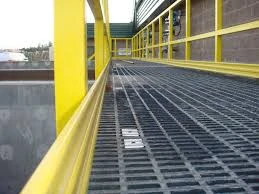
-
 Afrikaans
Afrikaans -
 Albanian
Albanian -
 Amharic
Amharic -
 Arabic
Arabic -
 Armenian
Armenian -
 Azerbaijani
Azerbaijani -
 Basque
Basque -
 Belarusian
Belarusian -
 Bengali
Bengali -
 Bosnian
Bosnian -
 Bulgarian
Bulgarian -
 Catalan
Catalan -
 Cebuano
Cebuano -
 China
China -
 China (Taiwan)
China (Taiwan) -
 Corsican
Corsican -
 Croatian
Croatian -
 Czech
Czech -
 Danish
Danish -
 Dutch
Dutch -
 English
English -
 Esperanto
Esperanto -
 Estonian
Estonian -
 Finnish
Finnish -
 French
French -
 Frisian
Frisian -
 Galician
Galician -
 Georgian
Georgian -
 German
German -
 Greek
Greek -
 Gujarati
Gujarati -
 Haitian Creole
Haitian Creole -
 hausa
hausa -
 hawaiian
hawaiian -
 Hebrew
Hebrew -
 Hindi
Hindi -
 Miao
Miao -
 Hungarian
Hungarian -
 Icelandic
Icelandic -
 igbo
igbo -
 Indonesian
Indonesian -
 irish
irish -
 Italian
Italian -
 Japanese
Japanese -
 Javanese
Javanese -
 Kannada
Kannada -
 kazakh
kazakh -
 Khmer
Khmer -
 Rwandese
Rwandese -
 Korean
Korean -
 Kurdish
Kurdish -
 Kyrgyz
Kyrgyz -
 Lao
Lao -
 Latin
Latin -
 Latvian
Latvian -
 Lithuanian
Lithuanian -
 Luxembourgish
Luxembourgish -
 Macedonian
Macedonian -
 Malgashi
Malgashi -
 Malay
Malay -
 Malayalam
Malayalam -
 Maltese
Maltese -
 Maori
Maori -
 Marathi
Marathi -
 Mongolian
Mongolian -
 Myanmar
Myanmar -
 Nepali
Nepali -
 Norwegian
Norwegian -
 Norwegian
Norwegian -
 Occitan
Occitan -
 Pashto
Pashto -
 Persian
Persian -
 Polish
Polish -
 Portuguese
Portuguese -
 Punjabi
Punjabi -
 Romanian
Romanian -
 Russian
Russian -
 Samoan
Samoan -
 Scottish Gaelic
Scottish Gaelic -
 Serbian
Serbian -
 Sesotho
Sesotho -
 Shona
Shona -
 Sindhi
Sindhi -
 Sinhala
Sinhala -
 Slovak
Slovak -
 Slovenian
Slovenian -
 Somali
Somali -
 Spanish
Spanish -
 Sundanese
Sundanese -
 Swahili
Swahili -
 Swedish
Swedish -
 Tagalog
Tagalog -
 Tajik
Tajik -
 Tamil
Tamil -
 Tatar
Tatar -
 Telugu
Telugu -
 Thai
Thai -
 Turkish
Turkish -
 Turkmen
Turkmen -
 Ukrainian
Ukrainian -
 Urdu
Urdu -
 Uighur
Uighur -
 Uzbek
Uzbek -
 Vietnamese
Vietnamese -
 Welsh
Welsh -
 Bantu
Bantu -
 Yiddish
Yiddish -
 Yoruba
Yoruba -
 Zulu
Zulu
frp products for thermal and nuclear power
FRP Products for Thermal and Nuclear Power Applications
Fiber Reinforced Polymer (FRP) composites are revolutionizing various industries, including thermal and nuclear power generation. As the demand for sustainable and efficient energy solutions continues to grow, FRP materials are becoming increasingly essential due to their unique properties. Lightweight, corrosion-resistant, and possessing excellent mechanical strength, FRP products are well-suited for the challenging environments found in power generation facilities.
Understanding FRP and Its Benefits
FRP is composed of a polymer matrix reinforced with fibers—commonly glass, carbon, or aramid. This combination results in a material that not only maintains a low weight, which is critical in construction and installation, but also provides superior strength and rigidity. Additionally, FRP materials exhibit exceptional resistance to corrosive elements, making them ideal for environments where exposure to water, chemicals, and extreme temperatures is prevalent.
In both thermal and nuclear power plants, equipment and structures are often subjected to harsh conditions including high temperatures, radiation, and corrosive substances. Traditional materials, such as steel and concrete, can suffer from degradation over time, leading to increased maintenance costs and safety concerns. In contrast, FRP products can enhance operational efficiency and lifespan, offering a more reliable solution.
Applications in Thermal Power Generation
In thermal power plants, FRP can be utilized in various applications including cooling towers, piping systems, and components like ducts and valves. The lightweight nature of FRP allows for easier transportation and installation, reducing labor costs and construction times. Furthermore, the corrosion resistance of FRP significantly extends the service life of these components, minimizing downtime for repairs.
Cooling towers, for example, are essential for dissipating heat in thermal power plants. Traditional materials often suffer from structural degradation due to chemical exposure and environmental factors. FRP cooling towers, on the other hand, provide a robust solution that can withstand these challenges, ensuring efficient operation over extended periods.
frp products for thermal and nuclear power

Applications in Nuclear Power Generation
In nuclear power plants, the stringent safety and regulatory requirements call for the use of advanced materials that can withstand extreme conditions while providing durability. FRP products are particularly advantageous in this sector for several reasons. They are non-conductive, which is crucial for electrical insulation, and their resistance to radiation and high temperatures makes them suitable for use in various components of nuclear facilities.
Key applications of FRP in nuclear power include containment structures, pipe supports, and electrical enclosures. The use of FRP in containment structures can augment safety by providing barriers that resist radiation and environmental damage. Additionally, pipe supports made from FRP can mitigate corrosion issues, ensuring the reliability of critical systems. The lightweight nature of FRP also means that less structural support is required, optimizing space and reducing overall project costs.
Future Prospects and Innovations
As technology advances, the potential for FRP products in the thermal and nuclear power sectors is expanding. Researchers are exploring the incorporation of smart technologies into FRP composites, allowing for real-time monitoring of structural integrity and performance. Moreover, the development of new resin formulations promises to enhance the heat and chemical resistance of FRP materials, further broadening their applicability.
The move towards renewable energy sources also presents opportunities for FRP. As hybrid power generation systems that combine thermal and renewable sources emerge, FRP's lightweight and resilient properties are poised to play a vital role in their development and implementation.
Conclusion
In summary, FRP products offer remarkable advantages for thermal and nuclear power applications. Their unique combination of lightweight, strength, and corrosion resistance makes them an ideal choice for addressing the challenges faced in these demanding environments. As industries continue to seek sustainable and efficient energy solutions, the role of FRP will undoubtedly grow, contributing to safer and more reliable power generation. With ongoing innovations and improvements, FRP technology is set to pave the way for the future of energy production, ensuring resilience and efficiency in the face of evolving demands.









